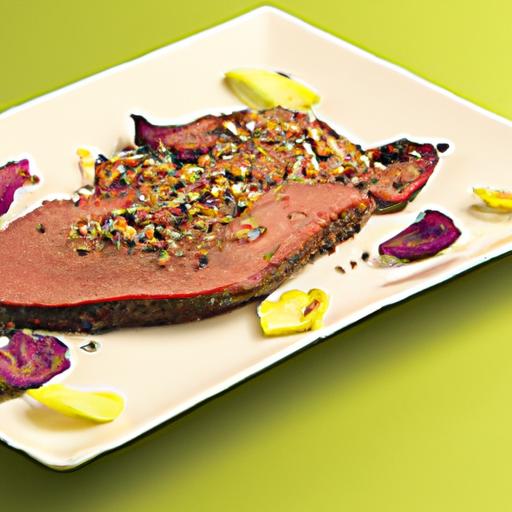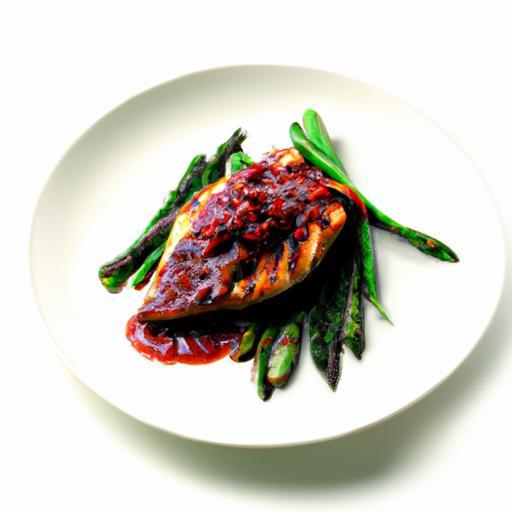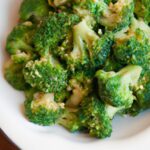When the sizzle hits the pan and the aroma starts to dance, you know you’re on the verge of culinary magic. But behind every perfectly seared steak or crisply sautéed vegetable lies a secret weapon: the right oil. Not all oils can withstand the scorching temperatures needed to lock in flavor and texture without breaking down or burning. In “Searing Secrets: Top Oils for High-Heat Perfection,” we’ll dive deep into the science and art of choosing oils that thrive under fire, helping you master the sizzling symphony of high-heat cooking. Whether you’re a seasoned chef or a passionate home cook, discovering these liquid golds can elevate your dishes from ordinary to extraordinary.
Searing Secrets: Top Oils for High-Heat Perfection
Searing Secrets: Top Oils for High-Heat Perfection unlocks the transformative science behind choosing the right oils to achieve that coveted crust and deep, savory flavor on your proteins. Understanding how oil smoke points influence flavor profiles can elevate your cooking from good to gourmet. This guide dives into the nuances of oil selection, teaching you how to master the sizzle and maximize taste with every sear.
Prep and Cook Time
Preparation: 5 minutes
Cooking: 10-15 minutes
Total Time: 20 minutes
Yield
Serves 4
Difficulty Level
Medium
Ingredients
- 2 tablespoons refined avocado oil (high smoke point and buttery flavor)
- 1 tablespoon grapeseed oil (light flavor, excellent for high heat)
- 4 boneless skin-on chicken thighs or protein of choice
- Salt, to taste
- Freshly ground black pepper, to taste
- 4 sprigs fresh thyme (optional, for aroma)
- 1 clove garlic, smashed (aromatic enhancer)
- 1 tablespoon unsalted butter (added at finish for flavor grace)
Instructions
- Preheat your skillet over medium-high heat until it is shimmering but not smoking. A heavy-bottom cast iron pan is ideal for retaining and distributing heat evenly.
- Pat chicken thighs dry thoroughly with paper towels. Moisture is the enemy of a perfect sear, so the drier the surface, the better the crust.
- Season both sides liberally with salt and freshly ground black pepper to amplify natural flavors through caramelization.
- Combine refined avocado and grapeseed oils in the pan. These oils offer high smoke points (520°F and 420°F respectively), allowing for sustained high heat without smoking or bitterness.
- Place chicken skin-side down carefully to avoid splattering. Allow it to cook undisturbed for 6-7 minutes until a deep golden crust forms. Resist the urge to move the meat too soon-this crust forms the signature flavor barrier.
- Flip chicken and add thyme sprigs, garlic, and butter to the pan. As the butter melts, baste the chicken with the infused fats using a spoon; this enriches flavor while continuing to cook evenly.
- Cook for an additional 5 minutes or until internal temperature reaches 165°F, ensuring the meat remains juicy beneath the perfect sear.
- Remove chicken from the pan and let it rest for 5 minutes, allowing juices to redistribute-once rested, slice and serve accordingly.
Tips for Success
- Smoke point mastery: Always opt for oils with smoke points above 400°F for searing to avoid off-flavors and harmful compounds.
- Oil freshness: Use fresh, high-quality oils stored in cool, dark places to preserve their integrity during cooking.
- Pan temperature: Test heat by flicking a few drops of water into the pan-if they sizzle and evaporate immediately, it’s perfect.
- Don’t overcrowd the pan: Leave space around each piece of meat to maintain consistent heat and prevent steaming.
- Alternate oils: Macadamia nut and refined safflower oils are also excellent, with smoke points above 450°F for those who want variety in flavor profiles.
Serving Suggestions
Pair your perfectly seared proteins with vibrant, seasonal vegetables like roasted asparagus or garlic sautéed green beans. Garnish with a sprinkle of flaky sea salt and fresh herbs such as parsley or chives for a stunning visual and flavor contrast. A squeeze of lemon over the top adds brightness that balances the rich, caramelized crust.
| Nutrient | Per Serving |
|---|---|
| Calories | 320 |
| Protein | 28g |
| Carbohydrates | 0g |
| Fat | 22g |
Discover more about selecting the right oils for cooking and learn from healthline about oil smoke points to deepen your culinary expertise.

Q&A
Q&A: Searing Secrets – Top Oils for High-Heat Perfection
Q1: Why does the choice of oil matter when searing food?
A1: When searing, the goal is to create a beautifully caramelized, crispy crust without burning your food. Oils with a high smoke point withstand intense heat without breaking down, smoking, or imparting bitter flavors. Choosing the right oil ensures a perfectly seared masterpiece, not a smoky disaster.
Q2: What exactly is a smoke point, and why is it crucial?
A2: The smoke point is the temperature at which an oil begins to smoke and degrade, releasing unpleasant flavors and potentially harmful compounds. For searing, you need oils with smoke points above 400°F (204°C) to maintain flavor integrity and safety under high heat.
Q3: Which oils top the list for high-heat cooking and searing?
A3: Some superstar oils include:
- Avocado oil: With a smoke point around 520°F, it’s versatile, neutral, and heart-healthy.
- Refined safflower oil: Clocking in near 510°F, it’s a neutral, budget-friendly option.
- Grapeseed oil: Smoke point around 420°F, light flavor, great for quick sears.
- Refined peanut oil: About 450°F, perfect for intense heat and adds a subtle nutty note.
Each shines when you need consistent heat without flavor interference.
Q4: What about olive oil-can it handle high heat for searing?
A4: Extra virgin olive oil has a lower smoke point (~375°F), so it’s better suited for medium-heat cooking or finishing dishes. However, light or refined olive oil varieties have higher smoke points (up to 465°F) and can stand up to searing if chosen wisely.
Q5: Are there oils to avoid for searing?
A5: Yes! Unrefined oils like cold-pressed flaxseed or unrefined walnut oil have low smoke points and delicate flavors. They burn quickly, producing off-flavors and harmful compounds-best reserved for dressings or gentle sautéing.
Q6: How can I tell if my oil is breaking down during searing?
A6: Watch for smoke wafting from the pan, unpleasant acrid smells, or a sticky residue on the cookware. These signs mean the oil has surpassed its smoke point and is degrading, so it’s time to reduce the heat or swap oils.
Q7: Any tips for searing perfection besides oil choice?
A7: Absolutely! Start with a scorching hot pan, dry your food to minimize steam, and don’t overcrowd the surface-this ensures even browning. Using the right high-heat oil complements these techniques, delivering that coveted golden crust.
Q8: Can blending oils help achieve high-heat readiness?
A8: Blending a high-smoke-point oil with a flavorful low-smoke oil can balance heat tolerance and taste. For example, mixing refined avocado oil with a drizzle of extra virgin olive oil adds depth while maintaining searing power.
Q9: How does the oil’s flavor impact the finished seared dish?
A9: Oils range from neutral (grapeseed, safflower) to robust (peanut, sesame). Neutral oils let the natural flavor of your seared ingredient shine, while stronger oils add a complementary note. Choose based on whether you want the oil to play a starring or supporting role.
Q10: Can using the wrong oil ruin my sear?
A10: It can! Low-smoke oils break down quickly, producing burnt flavors and uneven browning. They also smoke excessively, creating kitchen chaos. The right oil is your secret weapon-turning high heat into a culinary ally rather than an enemy.
Final Thoughts
As the final sizzle fades and your culinary masterpiece rests, remember that the secret to that flawless sear lies not just in skill, but in the oil that lifts your flavors to new heights. Whether you choose the robust embrace of avocado oil, the subtle strength of refined peanut, or the classic confidence of grapeseed, each brings its own magic to the heat. Embrace these top oils as your trusted allies in the kitchen, and watch as your dishes hit the pinnacle of high-heat perfection-crispy, caramelized, and irresistibly mouthwatering. The next time you ignite your pan, let these searing secrets guide your way to culinary brilliance.


